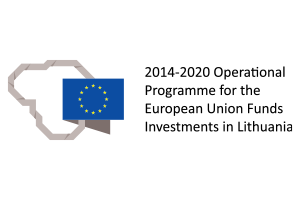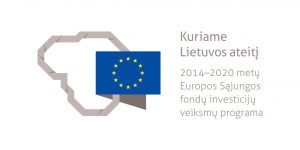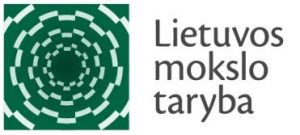
Lithuanian Energy Institute is implementing the project ” Na* and Ka* flame emission intensities during different biomass particle combustion” Nr. 09.3.3-LMT-K-712-06-0232, financed from the European Social Fund, under the European Union Funds Investment Operational Program, Priority 9, “Educating the Public and Increasing the Human Resource Potential”, Measure 09.3.3.3-LMT-K-712, “Developing the Scientific Competence of Scientists, Other Investigators, and Students in the Context of Scientific Research Activities”.
The research topic related with the combustion of biomass particles in order to investigate the optical emissions of Na, K and Ca radicals produced in the flame. The intrinsic properties of biomass used in bioenergy directly influence the combustion of fuels and the formation of various compounds. In contrast, the combustion of complicated biofuels leads to ash slagging problems. Fly ash is deposited on the heat transfer surfaces of the boiler and on the walls of the furnace, which adversely affects the performance of the boiler. Also, when biomass is burned in mixtures with straw or other agricultural feedstocks, the ash contains high levels of chlorides which might cause corrosion of the boiler surfaces. Moisture, mineral impurities and the size of the biofuel fraction are some of the main characteristics of biofuels that determine the quality of combustion and the performance of the combustion equipment. The potassium content of the biofuel is one of the main characteristics that determines the formation of ash and scale in the fuel. Therefore, the chemiluminescence method has been introduced for the determination of the intensity of K, Na, Ca elements released during the combustion of sludge, wood, straw. The lack of data on the regularities of thermal decomposition of biofuels encourages researchers around the world to engage in experimental and numerical studies, and it is important to make the results available to the target groups. Therefore, the conference will present the optimisation of the solid biofuel combustion process and the results of the chemiluminescence study of the radicals in the flame depending on the combustion conditions, aerodynamic parameters, flame shape, and the level of intensity of the emission of excited radicals, thus defining the possible limits of the combustion process control.
Project objective: To participate in the high-level international conference “12th International Conference on Energy and Development, Environment and Biomedicine (EDEB’2018)” and to present the results obtained – the chemiluminescence patterns of the main radicals in the flame depending on the combustion conditions and fuel parameters.
Project duration: 13-03-2018 – 28-08-2018
Project participant: dr. Nerijus Striūgas
Project Team
| Name, surname | Office | phone. | |
|---|---|---|---|
|
LEI Representative |
|||
| Nerijus Striūgas | 103-LK | +37037401877 | Nerijus.Striugas@lei.lt |







